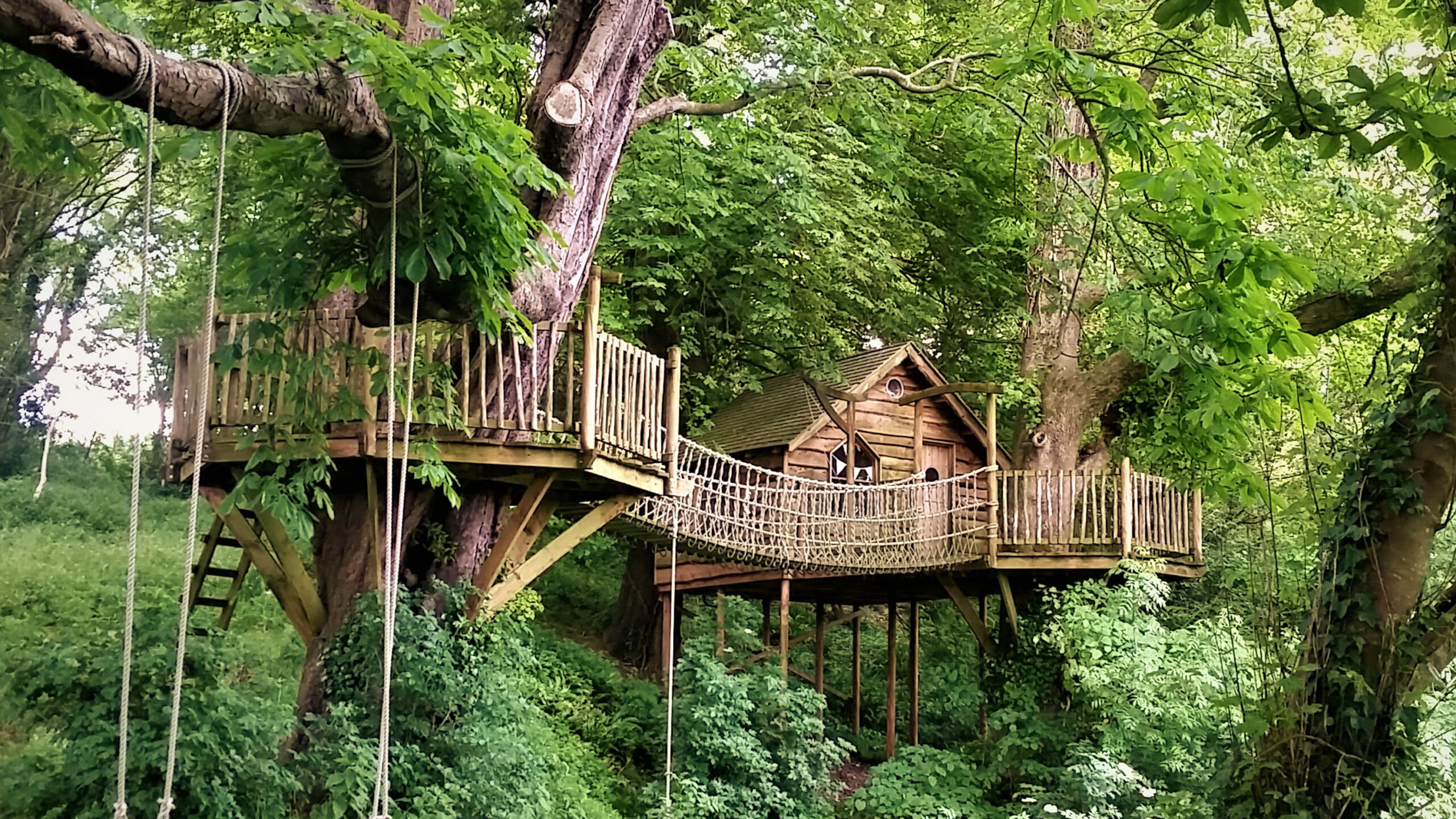Imagine the delight in your children’s eyes as they gaze upon their very own treetop sanctuary. A treehouse is more than just a play area; it’s a realm where creativity takes flight and adventures unfold. With the right designs and features, these elevated hideaways become the backdrop for cherished childhood memories.
In this article, we’ll explore a variety of treehouse ideas that promise to capture the hearts of your little ones. Whether you’re envisioning a simple lookout or an elaborate fortress, we’ve compiled options to suit every dream and budget. So, let’s ascend into the canopy and discover the perfect retreat for your family’s youngest adventurers.
What Are the Best Treehouse Ideas for Kids?
When it comes to treehouse designs for kids, the sky’s the limit. The best ideas combine elements of play, safety, and imagination. Think about incorporating a slide or swing to add an element of fun, or perhaps a climbing wall for a touch of adventure.
Themes can transport your child to another world. A pirate hideout complete with a ship’s wheel and flag, or a fairy-tale castle with turrets and flags can inspire endless play scenarios. And don’t forget the classic lookout tower, perfect for young explorers on the lookout for adventure.
For a more nature-inspired approach, consider integrating the treehouse with its surroundings. A birdhouse theme, complete with binoculars and a bird identification chart, encourages an appreciation for wildlife. Alternatively, a nature-inspired design with lots of windows can make a treehouse feel like part of the forest canopy.
Remember, the key is to tailor the treehouse to your child’s interests, ensuring they have a personal space they adore and are excited to spend time in.
How Much Does It Cost to Build a Treehouse?
Building a treehouse can range from a simple DIY project using affordable treehouse building materials to a high-end endeavor with custom designs. The cost largely depends on the complexity of the structure and the materials used.
For basic models, you might spend a few hundred dollars on lumber and hardware. However, for a more elaborate setup with multiple levels, high-quality materials like cedar or oak, and special features such as electricity or insulation, the costs could soar into the thousands.
To keep expenses down, consider using reclaimed wood or other recycled materials. Not only does this choice save money, but it also adds a unique character to your treehouse and is better for the environment.
The best approach to determine your budget is to first design your ideal treehouse and then seek quotes from professionals or price out materials if you plan to tackle the project yourself.
- Economic DIY solutions using reclaimed materials
- Mid-range pre-fabricated kits for convenience
- Luxury custom builds with high-end finishes
Regardless of the route you choose, the result is sure to be a magical getaway for your kids.
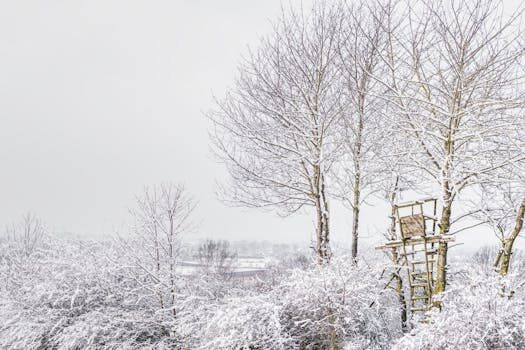
What Are the Key Considerations for Building a Treehouse?
Before embarking on the construction of a treehouse, it’s crucial to take into account several key considerations. Firstly, the health and stability of the tree itself are paramount. Choose sturdy trees like oak or cedar that can support the weight of the structure and its inhabitants.
Next, local building codes and regulations should be reviewed to ensure compliance, including any permits that may be required. Also, consider the impact of the treehouse on your property’s overall aesthetics and sightlines. It should be a feature that enhances your outdoor space, not detracts from it.
Accessibility is also important, especially for younger children. Sturdy ladders, rope bridges, or even a gentle staircase can provide safe and easy access. Moreover, including safety features such as railings and soft landing areas below are essential to prevent accidents.
Finally, think about the future. Design the treehouse in such a way that it can grow with your children, or be repurposed once they’ve outgrown it. This could be as simple as strengthening the structure to support more weight, or as complex as planning for easy modifications down the line.
How Can I Create a Toddler-Friendly Treehouse?
Creating a toddler-friendly treehouse demands special attention to safety and accessibility. A low-to-the-ground design minimizes the risk of falls, while still providing the sense of elevation that kids love. Safety nets, padded floors, and sturdy handrails can further protect your little ones.
Interactive elements like sensory boards, chalk walls, and steering wheels can offer endless entertainment for curious toddlers. And for the little climbers, a small, secure climbing frame can be a great addition, encouraging physical development and motor skills.
Consider also the comfort of the space. Soft cushions for reading, canopies for shade, and even a small sandbox beneath the treehouse can make it a cozy spot for playtime.
Remember to routinely inspect the treehouse for any potential hazards, such as loose boards or exposed nails, to ensure it remains a safe space for your child.
What Are Some Unique Treehouse Designs?
Exploring unique treehouse designs can spark inspiration for a truly one-of-a-kind hideaway. From spherical orbs nestled in the branches to A-frame structures that offer a modern twist, the possibilities are endless.
- Cube-shaped treehouses with geometric appeal
- Hobbit-style hideaways that blend into the surrounding landscape
- Treehouses built around the theme of a spaceship or submarine
- Observatories with telescopes for stargazing
- Art studios with large windows to draw in natural light
By thinking outside the traditional boxy structure, you can create a space that’s as visually appealing as it is fun. Consider incorporating unconventional shapes, bold colors, or even integrating the treehouse into a larger play structure.
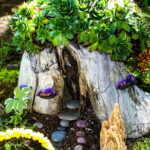 Tree stump ideas: 9 creative ways to give them a new lease of life
Tree stump ideas: 9 creative ways to give them a new lease of lifeHow To Personalize Your Treehouse?
Personalizing a treehouse can transform it from a generic structure to a cherished, individualized haven. First, involve your kids in the design process. Let them pick colors, themes, or specific features they’d like to see in their treehouse. This ensures the space truly reflects their personalities.
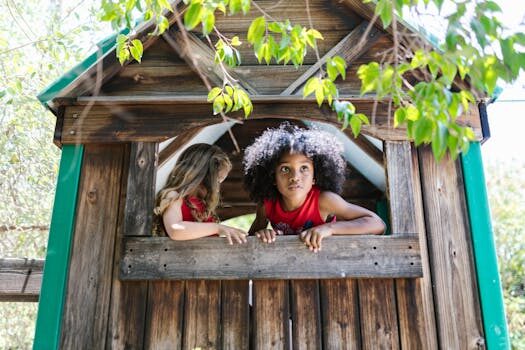
Add creative treehouse themes by painting murals, installing themed decor, or even crafting a custom sign with the treehouse’s name. String lights or lanterns can add a magical touch, especially at dusk. And don’t overlook the potential of soft furnishings, such as rugs, pillows, and curtains, to make the space cozy.
For a truly unique twist, dedicate a wall to the artistic expressions of your kids. Whether it’s handprints, drawings, or a collage of their favorite things, this personal touch can make a treehouse feel like a home.
Lastly, consider the views. Position windows or open areas to give your kids the best vistas, whether that’s overlooking a flower garden or facing the sunset. This attention to detail can elevate a simple structure into an enchanting escape.
What Safety Features Should I Include in a Treehouse?
When it comes to treehouses, safety is not just an afterthought—it’s a central component. To create a safe environment for your kids, start with the basics: stable construction, sturdy railings, and reliable access points.
Materials should be weather-resistant to prevent deterioration that could weaken the structure. Non-slip surfaces on floors, ladders, and stairs reduce the risk of falls, and protective barriers around all openings can prevent accidents.
Consider the installation of a soft landing surface beneath the treehouse, like mulch or rubber matting, and make sure all hardware is corrosion-resistant and securely fastened. And for added peace of mind, having a first-aid kit on hand for any minor injuries is wise.
Regular maintenance is crucial. Inspect the treehouse seasonally for any damage, paying particular attention after extreme weather events. This helps to ensure the structure remains as secure as the day it was built.
Related Questions on Treehouse Adventures
What Are Some Good Ideas for a Treehouse?
Good treehouse ideas blend imagination with functionality. Consider incorporating elements that cater to your child’s interests, such as a pirate hideout or a mini library for bookworms. Integrating play features like swings, ropes, or slides can add an element of fun.
Themed treehouses are always a hit. These can range from a castle in the sky to a jungle retreat. Personal touches, such as hand-painted signs or a mailbox, also make a treehouse feel special and inviting.
How Can I Make a Treehouse in My Backyard?
To make a treehouse in your backyard, start by selecting a healthy and sturdy tree. Draft a design that fits your tree and meets your child’s desires. Gather DIY treehouse plans or consult a professional to ensure the design is safe and feasible.
Collect the necessary materials, which could include wood, nails, screws, and any special features you wish to include. Then, carefully construct the treehouse, keeping in mind safety, durability, and ease of access.
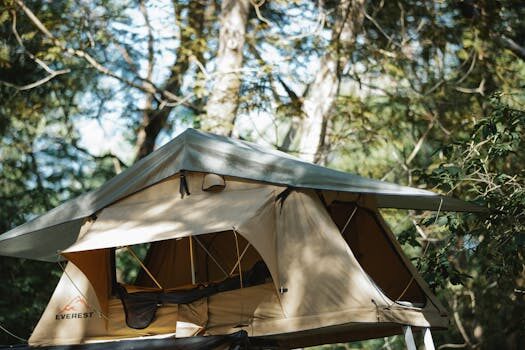
What Materials Do I Need to Build a Treehouse?
Essential materials for a treehouse include lumber (such as cedar or reclaimed wood), decking, screws, and nails. You’ll also need tools such as a saw, drill, and hammer. For added features, items like ropes, swings, or slides may be desired.
It’s beneficial to use weather-resistant materials or treat your wood to withstand the elements. And remember, safety features like railings and non-slip surfaces are vital.
What Is the Average Cost of Building a Treehouse?
The average cost of building a treehouse can vary widely, from a few hundred dollars for a simple structure to several thousand for a more sophisticated one. Factors such as size, materials, and features will all affect the final cost.
To get a better idea of the potential expense, draft a detailed plan and price out the materials. Don’t forget to factor in any labor costs if you plan to hire professionals.
How High Should a Treehouse Be off the Ground?
The height of a treehouse should be determined by the age and abilities of the children who will be using it. For younger kids, a height of 6-8 feet off the ground can be sufficient, whereas older children might enjoy a treehouse set 10-12 feet up.
It’s imperative to balance the thrill of height with safety considerations. Ensure that the structure is well-supported and that safety features like railings and soft landings are in place.
If you’re looking for visual inspiration to accompany these ideas, take a look at this video that showcases a range of treehouse designs for kids:
 Types of driveway materials and their pros and cons, according to landscaping experts
Types of driveway materials and their pros and cons, according to landscaping expertsIn conclusion, building a treehouse is not just about creating a fun play area—it’s about crafting a space where kids can dream, explore, and make memories. Whether you opt for a simple platform or a fully-fledged fort, the key is to design a space that’s safe, engaging, and reflective of your child’s imagination. With these treehouse ideas, your kids are sure to have their very own adventurous hideaway that they will love for years to come.

